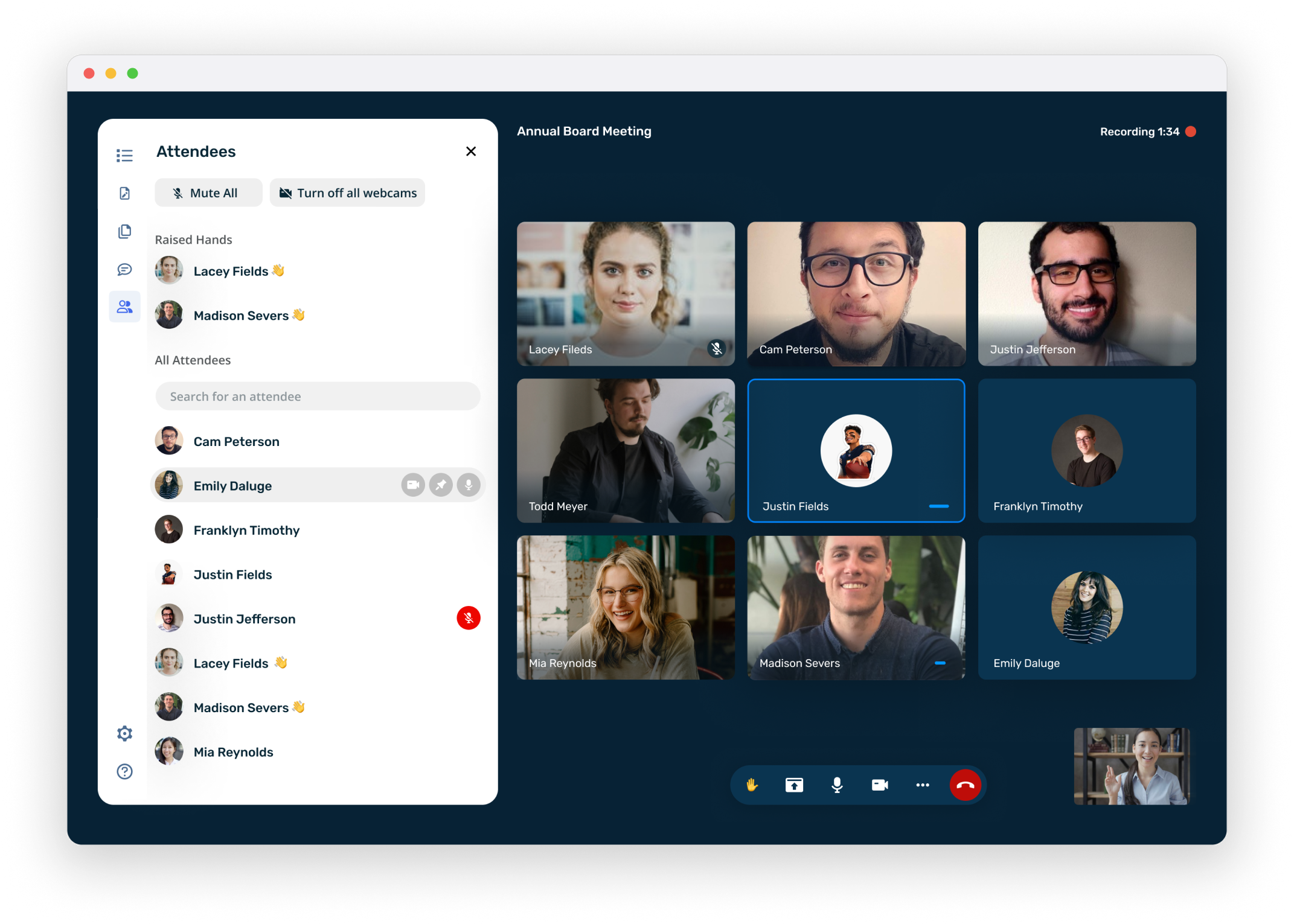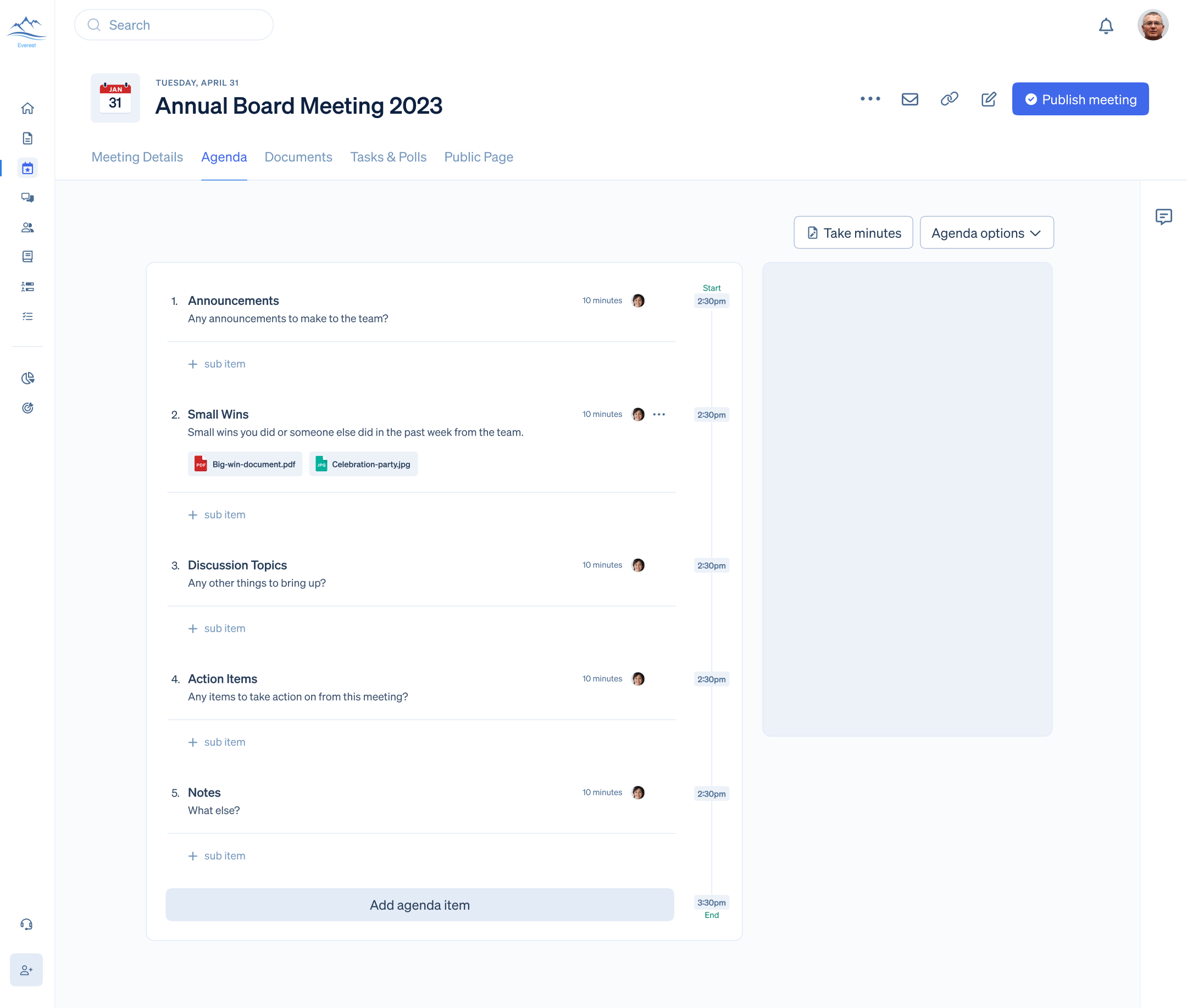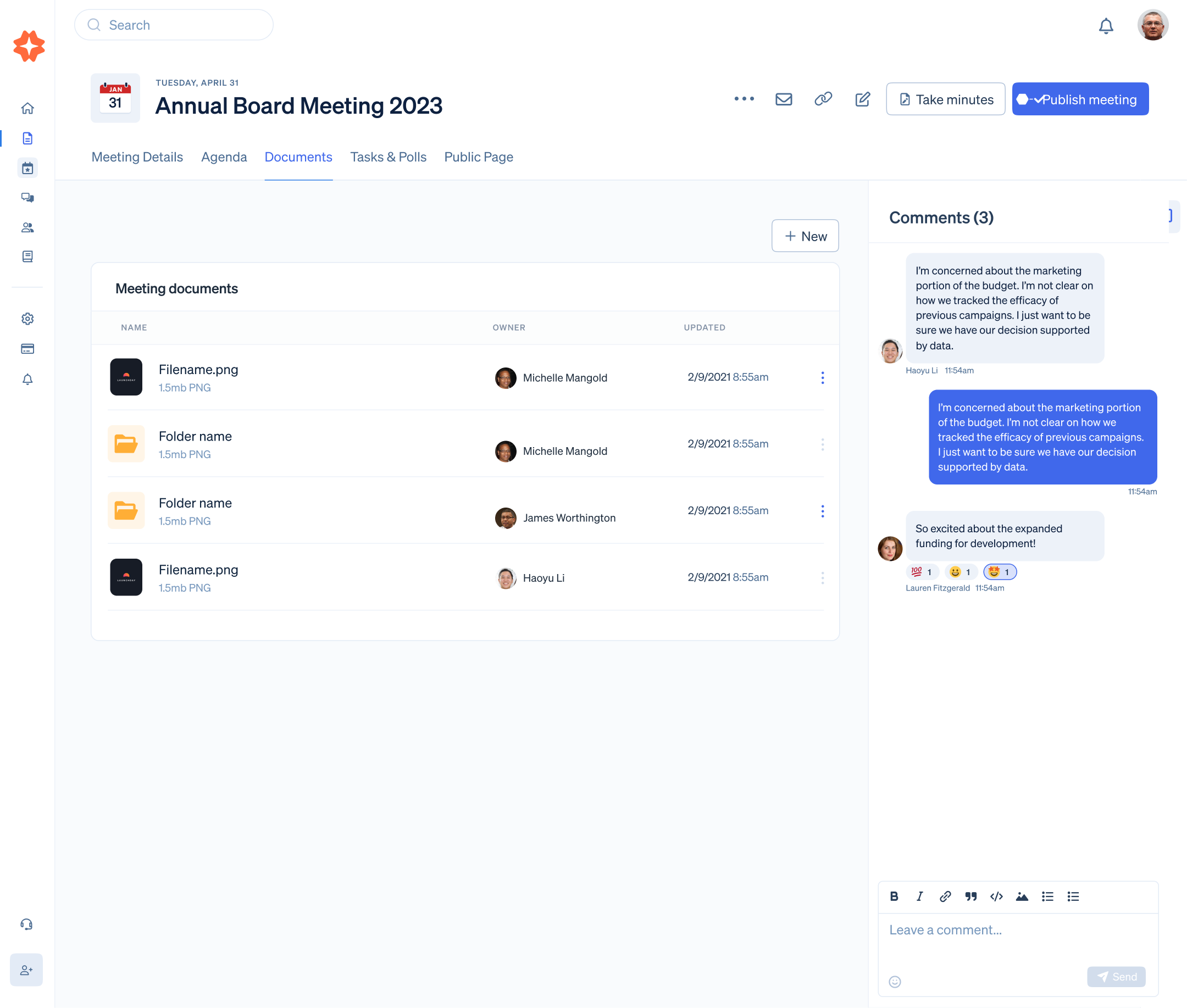
Boardable is a board management software that allows non-profits to prepare for meetings, engage with members, and take action on what matters most in an all-in-one platform.
YEAR
2022
ROLE
Research, UX, UI
SITE
INTRODUCTION
As an all-in-one platform for board management, Boardable wanted to create a video meeting integration.
Non-profit and for-profit boards face challenges like unorganized documents, poorly managed meetings, and low engagement. Since its startup launch in 2016, Boardable has addressed these issues with an all-in-one platform for board management and engagement.
Wanting to expand its features and cater to the needs of evolving board meeting requirements, Boardable Spotlight was born. This enhanced customer satisfaction and loyalty, driving increased revenue and establishing Boardable as a reliable solution for board collaboration.

PROBLEMS
A one-stop-shop remote board meeting was needed.
Board meetings require several requirements to fit the legal requirements which often lead non and for-profits to use a "duck-taped" solution of multiple digital (Zoom, Google docs) and physical solutions (filing cabinets, the USPS).
We wanted to support members who are planning, conducting and joining these meetings. In developing Boardable Meeting, the Product Team focused on these goals.
Adapting a New Design System
Boardable was undergoing a new design system at the same time. So a UI design system for meetings needed to be distinct but on brand.
Understanding the Intricacies of Board Meetings
A pre-approved agenda distributed in advance, a quorum of members present to conduct business, accurate minutes documenting discussions were the few items we needed to understand when designing.
Mobile Centric
With the mobile app being built as well, meetings needed to be adaptive for all screens.
THE NEW BOARDABLE
Boardable was implementing a new design system at the same time, which required the UI design system for Spotlight meetings to stand out while remaining consistent with the brand.
The exciting part was since it was all being done together by the same team, we were able to create a cohesive design system for both platforms.
BOARD MEETING INTRICACIES
Scheduling the board meeting is just the first step. Executive Assistants must finalize the agenda, gather documents, and ensure all participants are invited.
Research revealed a lack of SOC2-compliant collaboration tools, so we introduced features for users to view, annotate, and comment on documents in the Boardable Document Center, which could be viewed during meetings.
Additionally, the Minutes experience was redesigned, enabling seamless real-time recording during meetings based on user feedback.

Meeting Agenda

Meeting Documents
WIREFRAMING
Integrating meeting minutes, agenda, and documents in Spotlight Meeting.
Understanding that Board meetings have several requirements for meetings to happen, Spotlight was designed with an agenda feature, editable meeting minutes and a document viewer.
Wireframe: Integrating agenda, minutes and documents into Spotlight
MEETINGS ON MOBILE
Mobile was a priority for users who were on multiple Boards and companies.
Recognizing the significance of maintaining a consistent user experience across both mobile and desktop platforms, we engaged in simultaneous mapping for these interfaces.
This ensured that the core user experience remained coherent and seamless, regardless of the device used. Consistency is paramount in creating an intuitive and user-friendly product.
SUMMARY
Final thoughts
With Boardable, the all-in-one, Board management tool, a meeting integration was needed for the detailed board meetings that non-profit and for-profit meetings conduct.
Boardable Meeting was introduced in order to streamline agenda creation, attendance recording and meeting minutes.
© 2025 Neer Patel